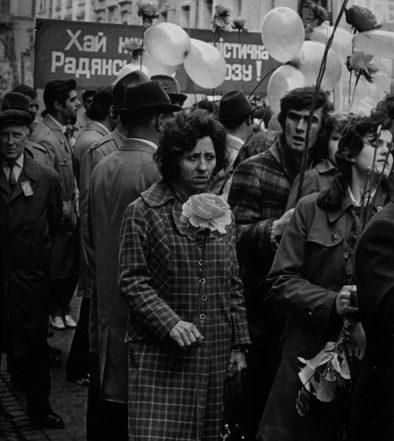Photography and Soviet Censorship
dal 5/2/2004 al 27/3/2004
Segnalato da
5/2/2004
Photography and Soviet Censorship
Giedre Bartelt Galerie, Berlin
(from the 1960s until 1980s) This exhibition is one of the first attempts to comprehend censored photography of the Soviet Union from Brezhnev until perestroyka. An exhibition can only fragmentarily trace Soviet censorship (Boris Groys once called it non-transparent), it can neither explore all of its spheres nor shed light on them in a systematic way, particularly because there is not much proof of forbidden photography. The publication of 'incorrect' images used to be simply refused without any comments and photos were just taken off the walls shortly before the opening of exhibitions.

(from the 1960s until 1980s)
curated by Margarita Paskeviciute
This exhibition is one of the first attempts to comprehend censored photography of the Soviet Union from Brezhnev until perestroyka. An exhibition can only fragmentarily trace Soviet censorship (Boris Groys once called it non-transparent), it can neither explore all of its spheres nor shed light on them in a systematic way, particularly because there is not much proof of forbidden photography. The publication of 'incorrect' images used to be simply refused without any comments and photos were just taken off the walls shortly before the opening of exhibitions. Stamps for refusal of public display, as for export, did not exist.
Thus research into Soviet censorship of images resembles ethnographic field studies: its most important source are the authors themselves and other first-hand witnesses. Apart from that, there are stories about this modern kind of iconoclasm which circulate until this day in the form of anecdotes. One of them is about the white shoes of a highly decorated war veteran in a black suit which were discovered on the photo only after its publication in a newspaper. Did the photographer paint them white to mock a Soviet hero?!
Margarita Paskeviciute, curator of the exhibition, can tell many such stories. She was employed by the Soviet society of photographic art shortly after its founding in 1969 and remained there for 23 years. According to her, one of the most important tools in her job was a sign that read 'Closed for technical reasons' which she used to carry in her pocket at all times so that she could hang it up at the entrance should the gaps in-between pictures become too wide.
Aside from those with insders knowledge, the steadily disappearing collective memory of homo sovieticus helps to reconstruct the guidelines of Soviet censorship. In fact, every thinking Soviet citizen knew them without written declaration: one could guess what the censor had in mind when he ordered a picture to be taken down before the opening of an exhibition. Ideological control was omnipresent and not confined to works of art, as one of Antanas Sutkus' photos shows. Censorship was also applied in real life: dissidents were locked away in psychiatric hospitals and men with long hair shaven bald in the local police station - the same place where people found drunk would be put under cold showers to sober them up. One of the consequences of officially non-existent censorship was that some photographers resigned and put their work straight into the drawer.
Photography seemed ideally suited to socialist realism: life could be shown in a form that was understandable to every worker and, what was more important, the pictures could be reproduced for propaganda purposes. Any type of experiment, including of course more advanced photography, were unwelcome; documentary style was preferred. It was only allowed to show the 'correct' life of communist society: there were permitted and forbidden subjects. The latter included everything that mustn't exist: social outsiders - the poor, those who got into trouble with the law, the jobless, disabled, old-aged and, naturally, dissidents. Other forbidden themes were pollution of the environment, all signs of mismanagement, as well as, for a long time, the naked human body and certain practices and ways of life - mainly religion and alcoholism.
The taboos concerning ideologically preferred themes - the military and political festivities - are most interesting from a technical point of view. Depictions of young, heroic soldiers or of neat workers marching in exact rows were expected. Images of mass meetings and demonstrations produced almost a genre in its own right in Soviet photography. They were, one could say, obligatory for each press photographer. But some photographers departed soon enough from the pattern of parading de-individualised masses. The photographic eye discovered the decomposition of ordered state festivities or faces that looked tired and resigned. When the mood improved the camera discerned alcohol-induced liveliness with carnevalesque tendencies. These images evoke associations with the mediveal danse macabre or Dutch scenes of peasant feasts. It is obvious that they could hardly have delighted even censors with little iconographic knowledge.
Image: Milda Drazdauskaite, During the parade, 1982
February 6th - March 27th 2004. Open hours: Tues - Fri 14 - 18, Sat 12 - 18
Opening on Friday, 6th February 18 - 21
GIEDRE BARTELT GALERIE
Linienstr. 161, Kleine Hamburger Str. 10115 Berlin
Tel. +30/88 520 86
Fax +30/88 67 55 68



